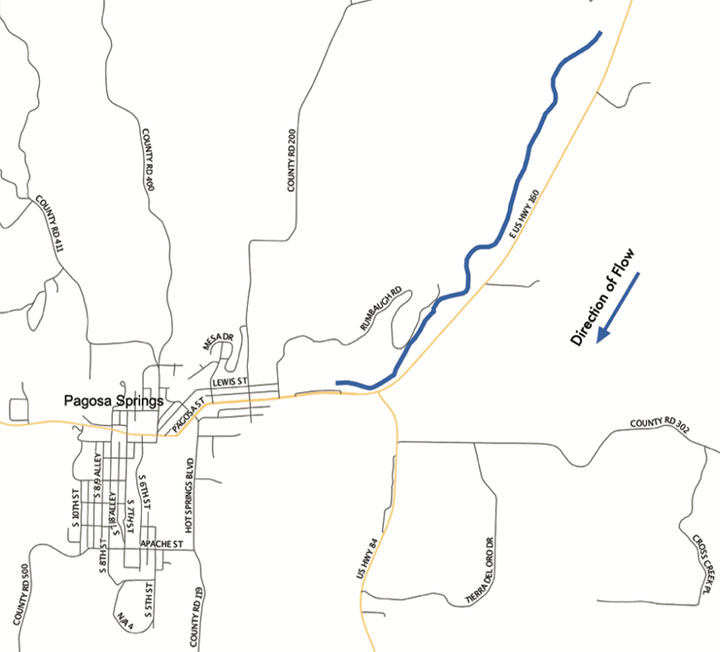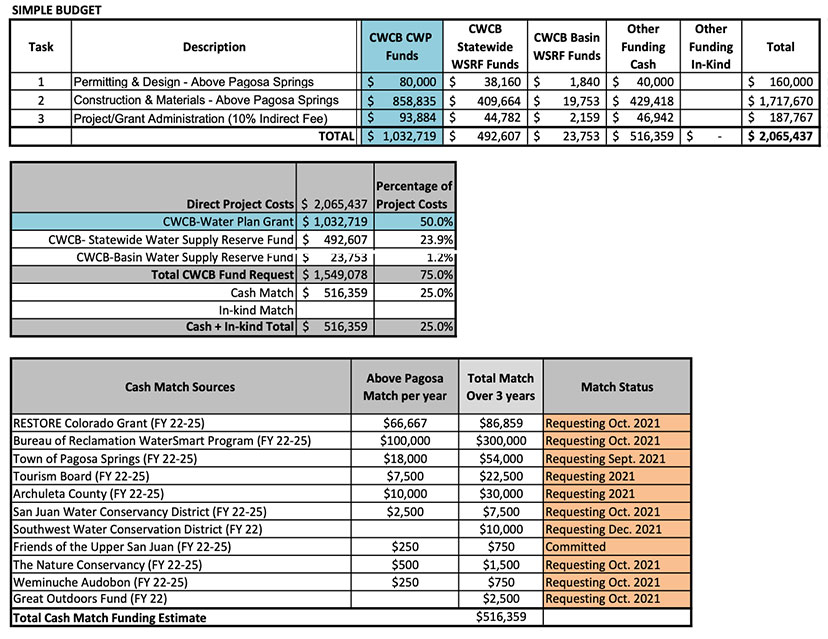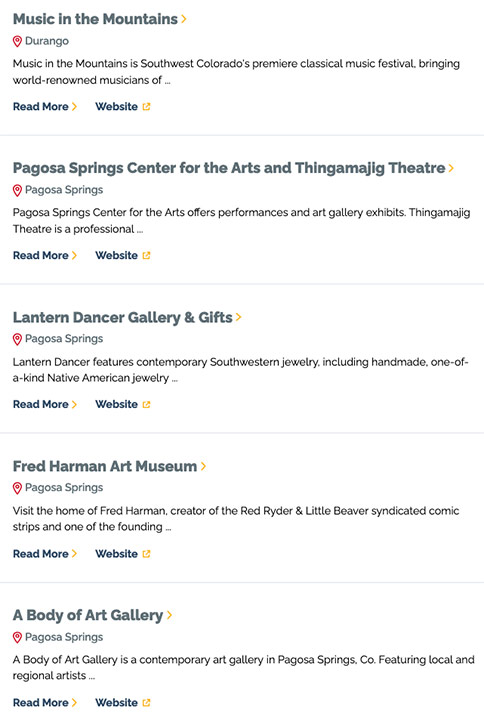We touched on the topic of ‘recreation districts’ yesterday in Part Four, since that was one of the topics talked about, briefly, at the joint meeting on June 28.
Ten elected officials — three Archuleta County commissioners, and seven Town Council members — shared ideas around a conference table, about money and property and services and recreation… and even, about the housing crisis.
At the conclusion of the meeting, the elected officials expressed an interest in continuing the discussion about recreation districts, at a future joint meeting.
But… speaking about the housing crisis, Council members Jeff Posey and Gary Williams floated the idea that any government support for workforce housing ought to be aimed exclusively at government employees. Considering how difficult hiring and employee retention has become. (The Town recently hired a new employee to guide its new Housing Division, last month. Unfortunately, the employee has already resigned.)
Mayor Shari Pierce, however, questioned the idea of limiting housing investments to only government employees.
“I just personally have a little heartburn, about us using taxpayer money to build housing for our own employees, and excluding the people who are working to make our community run, in restaurants and retail and stuff like that. I think we need to be really careful, if we want to do stuff like that…”
She was interrupted by Commissioner Ronnie Maez.
“Well, like I’ve said — you’ve heard me say it before — I mean, why is housing your government’s problem? You know, and we’re seeing it because we can’t find employees to serve the people.”
We have some interesting shared values here in Pagosa Springs in 2022, although not all of us share the same values; that much is obvious. Commissioner Maez asks us whether housing is government’s problem.
Good question. What exactly are the problems that taxpayers ought to be forced to pay for? As we all know very well, taxes are extracted from us without our express personal consent. Taxes are assigned by the community as a whole, not by choices made by each individual community member. When we choose to join a community — like, say, Pagosa Springs — we are expected to ‘pay our dues’.
How should those ‘dues’ get used?
Street maintenance, for one thing. I guess we can all agree on that. Modern life would come to a standstill without streets. Sidewalks, too, if we’re lucky.
Should government be focused on real necessities of life? Like providing water? Preventing crime? Educating our children? A hospital?
How about… like… “housing”? That seems like it might be a real necessity, to some people.
Meanwhile, quite a bit of the talking at the June 28 joint meeting centered around “recreation”.
Is “recreation” a real necessity? I’m just asking.
Back when Michael Whiting was serving on the Board of County Commissioners, he was fond of reminding us that our true value system is expressed by the manner in which we allocate our time and money. Not in so many words. (I don’t recall his exact words, but I think I’m in his conceptual ballpark, so to speak.) While he was a commissioner, he urged his fellow commissioners and the Town Council to dedicate public funds to three ‘strategic priorities’: broadband enhancement, childcare, and workforce housing.
Those three areas of concern were, at the time, underfunded. Commissioner Whiting invited his fellow elected officials to express their values with their money. (Actually, it was our money, but you get the idea.)
So while we’re talking about necessities… is “fishing” a necessity?
We are running a story this morning about a federal grant awarded to Trout Unlimited by the U.S. Department of the Interior, aimed at making a stretch of the San Juan River friendlier to trout. Which might also make the river friendlier to fishermen, of course, depending on the level of public access.
The river might also become friendlier to rafts and inner tubes.
The press release refers to the proposed river improvements as the ‘Pagosa Gateway Project’.
We will note here that “growth” is assumed by many smart Americans to be not only inevitable, but also desirable, if handled in a smart manner. And for Pagosa Springs, healthy “growth” is — some believe — dependent upon the expansion of the Outdoor Recreation Industry.
This industry has a few major components. The first is actual recreation. Hiking. Hunting. Fishing. Mountain biking. Skiing. Snowmobiling. Rafting. Four-wheeling.
Another component is marketing, which gets handled mainly by the Pagosa Springs Area Tourism Board (PSATB), with its $1.3 million annual budget. From what I can tell, from the perspective of an local resident, the marketing happens mainly online, through two key websites.
visitpagosasprings.com (official branding: “Refreshingly Authentic”)
and
colorado.com (official branding: “Come to Life”)
On the colorado.com website, our quiet, authentic community is described thusly:
Pagosa Springs sits quietly under the Continental Divide at the feet of southwest Colorado’s San Juan Mountains. Home to the mineral-rich waters of the world’s deepest hot spring and abundant sunshine year-round, the town offers plenty of opportunities to adventure outside, soothe the soul and take in the majesty of the Rocky Mountains. You will be hard-pressed to find a more refreshingly authentic mountain town.
If you are a tourist-type person, the website offers 16 categories of information to explore, including, for example, “Shopping”, “Water Activities”, “Adventure Sports” and “Deals”.
And also “Arts & Culture”.
Here are the only five listings under “Arts & Culture”.
“Music in the Mountains” is actually based in Durango, not Pagosa Springs. “Lantern Dancer Gallery” is a high-end gift shop.
“Fred Harman Art Museum” and “A Body of Art” are both out of business.
So it might appear that the only “authentic” cultural attraction, here in Pagosa Springs, is Thingamajig Theatre Company.
Fortunately, we also have fishing.
The “Pagosa Gateway Project” is a three-mile stretch of the San Juan River, upstream of the Conoco station at the east end of downtown.

The project is not cheap. Call it $2.1 million? According to the proposed budget, the state taxpayers who fund the Colorado Water Conservation Board (CWCB) will be expected to fork out 75% of the project cost, to be matched by local taxpayers and other grants.
The Town has promised about $54,000, and the Tourism Board is offering $22,500. Archuleta County is expected to contribute $30,000, and the San Juan Water Conservancy District $7,500… over a three-year period. Some non-profits are also contributing.
The U.S. Bureau of Reclamation WaterSMART program apparently donated $375,000 to this project, which was $75,000 more than what was expected from that grant, according to the proposed project budget.

If Trout Unlimited is able to acquire all the required taxpayer-funded grants, then some company can be hired to “enhance” maybe three miles of the San Juan River, making it more friendly to, basically, two types of aquatic life. Tourists. And fish.
Necessities?


